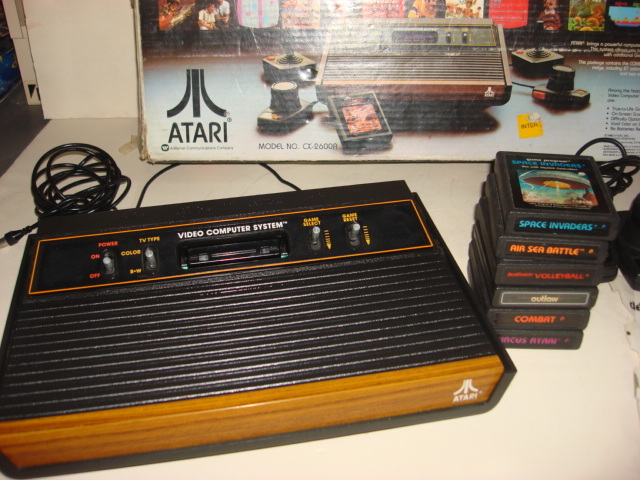The second generation of video games (1976–1984) includes the Atari 2600, Intellivision, Odyssey 2, and ColecoVision. By the end of its lifespan in 1992, the Atari 2600 had sold 25 million units.1 The ColecoVision sold 6million units, as of 1984.2 As of 1990, the Intellivision sold 3 million units.345 See also: List of best-selling game consoles. A success that would prove to be the birth of a rivalry that has gone down in video game history as the first ever Console Wars. Nintendo Entertainment System released in 1985 The First Console. E The second generation of computer and video games (sometimes referred to as the early 8-bit era) began in 1976 with the release of the Fairchild Channel F and Radofin Electronics ' 1292 Advanced Programmable Video System.
- Second Generation Consolesthe History Of Video Games To Play
- Second Generation Consolesthe History Of Video Games On
- Second Generation Consolesthe History Of Video Games Online
Home > Articles > Home & Office Computing > Entertainment/Gaming/Gadgets
␡Second Generation Consolesthe History Of Video Games To Play
- Second Generation (Golden Age): 1977-1982



Like this article? We recommend
Like this article? We recommend
Second Generation (Golden Age): 1977–1982
Fairchild had initiated the age of the programmable video game, but its graphics weren't far removed from those of the original PONG game. Customers clamored for higher-resolution graphics, better game play, and more games—which Atari would soon deliver.
Atari VCS
Second Generation Consolesthe History Of Video Games On
The 'golden age' of home video games was launched in October 1977 when Atari released its own programmable video game system. Priced at $199, Atari's Video Computer System (VCS), later known as the Atari 2600, was based on an 8-bit Motorola 6507 microprocessor, with 256 bytes of RAM. On the market through 1990, the Atari VCS went on to sell more than 25 million units over its product life. Over the course of its production run, 40 different manufacturers created more than 200 different games for the system, selling more than 120 million cartridges of popular games such as Space Invaders, Asteroids, and Pac-Man.
Bally Professional Arcade
One of Atari's first competitors in the programmable video game market was Bally, which launched the Bally Professional Arcade in 1977. Even though the Bally unit had better graphics than the Atari VCS, it sold at a much higher price ($350) and failed to catch on beyond a hard-core cult following who appreciated what the system had to offer. In 1981, Bally sold the rights to the Professional Arcade to Astrovision, which in 1982 marketed the then-dying system as the Astrocade.
Magnavox Odyssey2

Second Generation Consolesthe History Of Video Games Online
Magnavox jumped into the programmable video game market with the Odyssey2. Launched in 1978, the Odyssey2 featured an integrated alphanumeric membrane keyboard. The Odyssey2was more popular in Europe than in the United States, where parent company Philips Electronics marketed it as the Videopac. In the United States, it sold only about a million units—well below the market-leading Atari 2600.
Mattel Intellivision
Atari received a more serious competitor in 1980, when Mattel launched its Intellivision video game system. Intellivision featured better graphics than the VCS and was the first video game system to utilize a 16-bit microprocessor—the General Instruments 1600. Intellivision became known for its proprietary sports titles, such as Major League Baseball, NFL Football, NHL Hockey, and NBA Basketball, even though the lack of third-party games contributed to its second-place showing against the Atari 2600.
Vectrex
Vectrex was a vector-based (as opposed to sprite-based) game system that had its own black-and-white monitor over which plastic colored inlays could be placed to add 'color' to games. It had two built-in controllers that were shaped kind of like the future Nintendo NES controllers, but with more buttons. Graphics for some games were superior to sprite-based systems, but only a limited number of games could use vector graphics. Released for the 1982 Christmas season, Vectrex didn't achieve widespread support from a public now accustomed to color game consoles that attached to their living-room television sets, and the system was declared dead less than two years later.
Related Resources
- Book $21.59
- eBook (Watermarked) $38.39
- DVD $8.00
